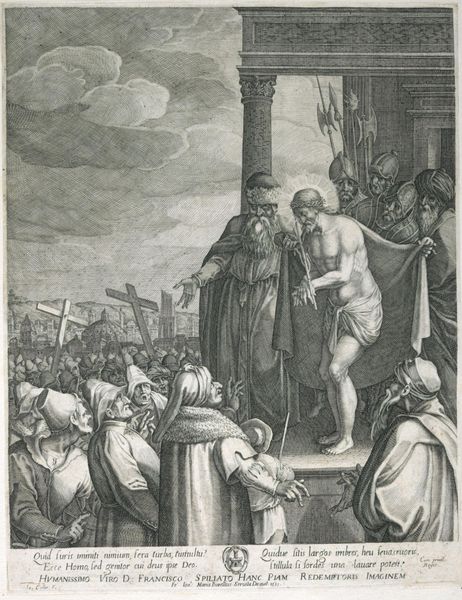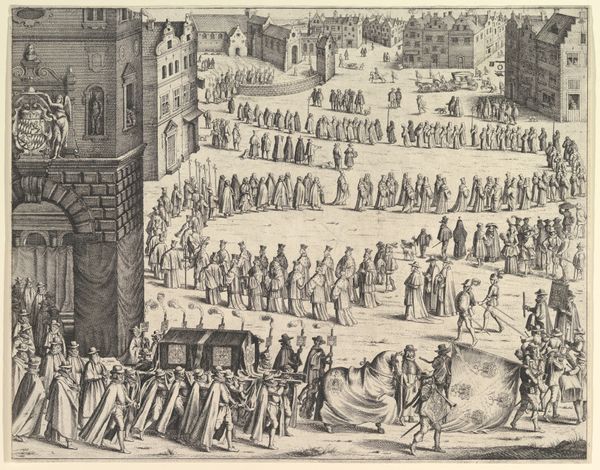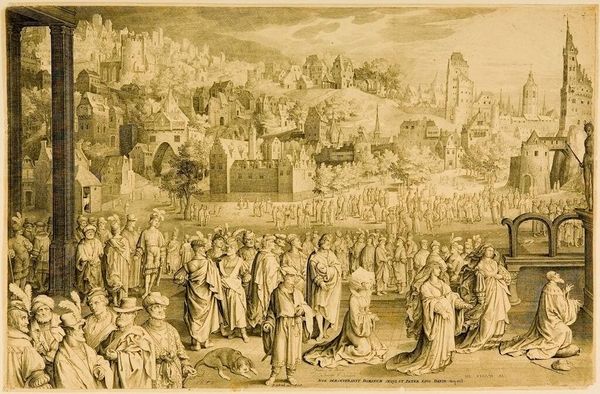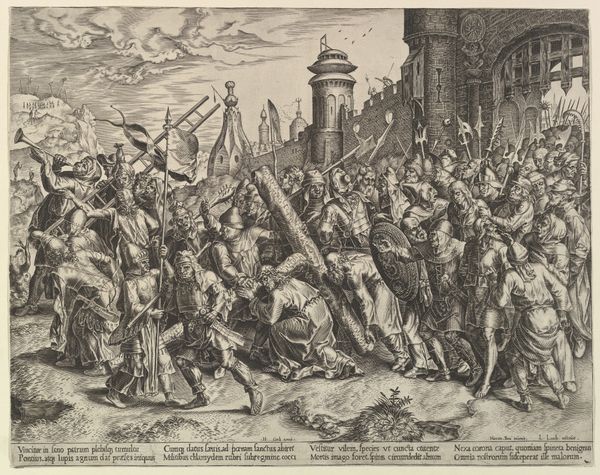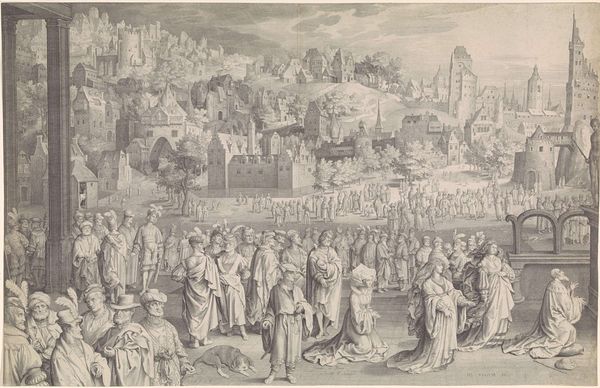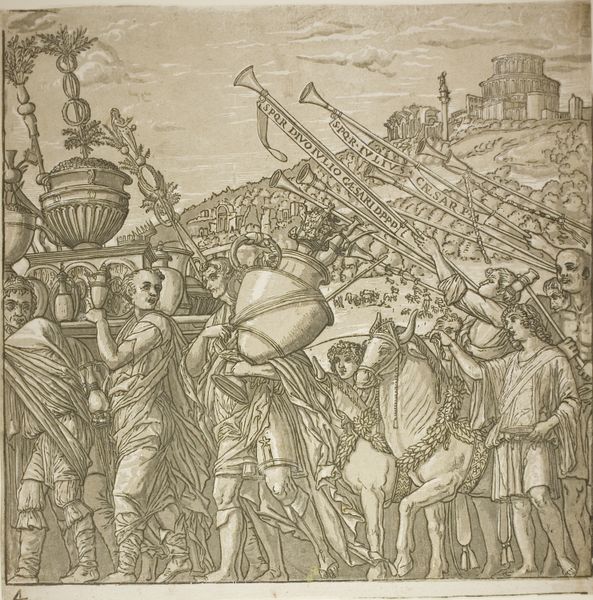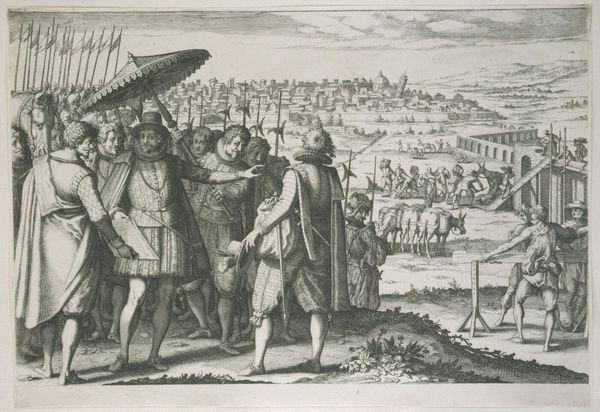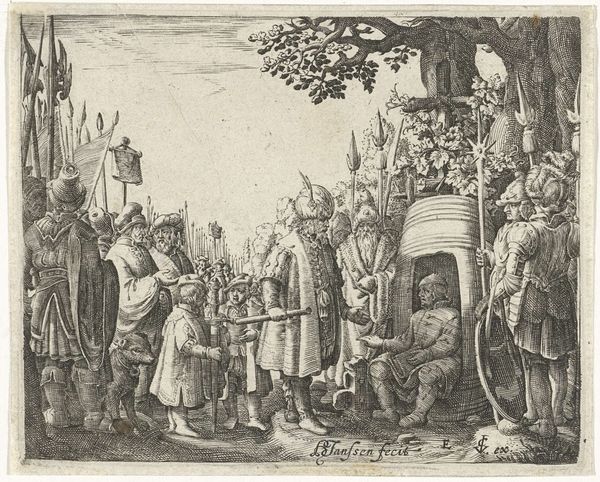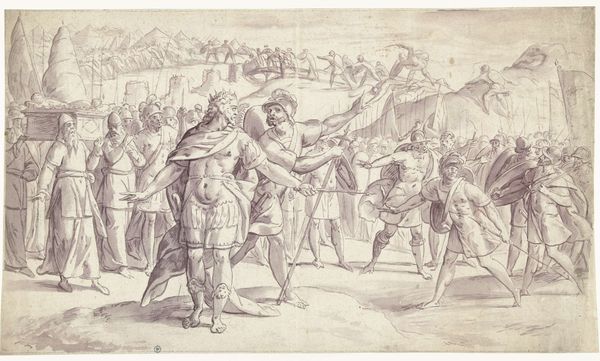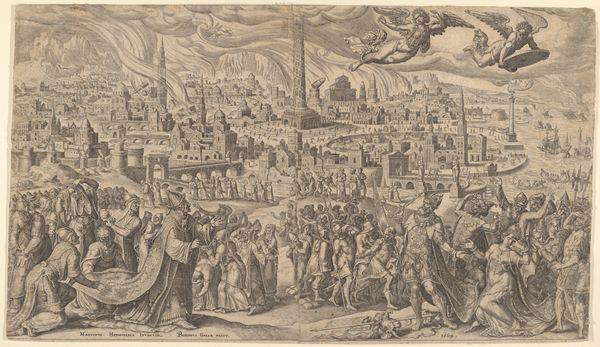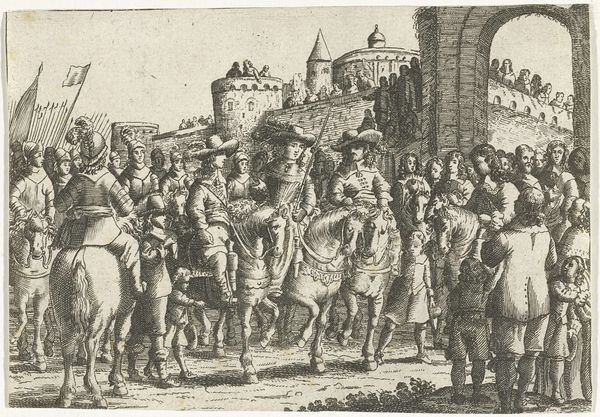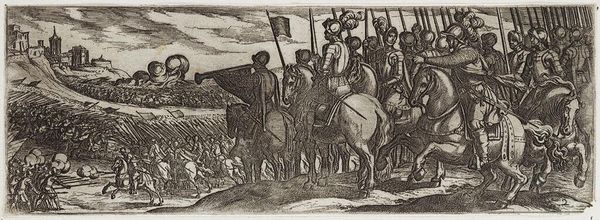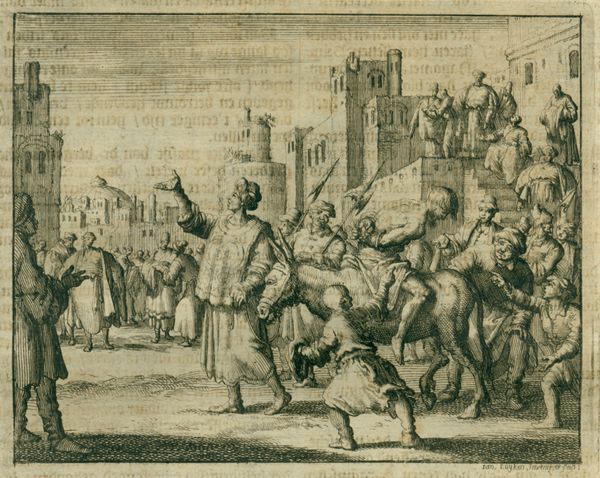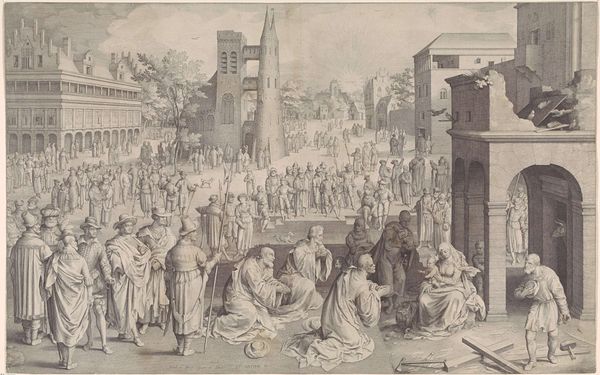
painting, oil-paint
#
narrative-art
#
painting
#
oil-paint
#
figuration
#
oil painting
#
group-portraits
#
christianity
#
men
#
mythology
#
history-painting
#
italian-renaissance
#
mixed media
Dimensions: 281 x 307 cm
Copyright: Public domain
Curator: This painting’s crowded scene presents us with Vittore Carpaccio's "The Pilgrims Meet Pope Cyriac before the Walls of Rome," created around 1493, using oil paint. It has a fascinating depiction of a religious narrative unfolding. Editor: Immediately, the scale impresses me; look at that multitude of figures, all rendered with incredible detail using, what seems to me, simple paints. The red and white banners cutting through the composition are striking. Curator: The vibrant hues used here would’ve demanded skilled artisans grinding pigments, mixing oil and controlling the painting's surface. We see such saturated reds from possibly expensive materials like vermillion—its luminosity a statement in itself. It wasn’t simply artistic vision, it was also availability. Editor: True, the social context surrounding the making of colors adds an intriguing layer! Considering that papal Rome during this period underwent massive construction projects that heavily impacted artistic production, one begins to wonder about patronage and artistic visibility. What sort of networks allowed Carpaccio to engage with such subject matter and to secure his resources? Curator: Absolutely. Consider also the use of linear perspective – very en vogue during the Italian Renaissance. He cleverly directs our eye towards the fortress, using color intensity and mass arrangement to draw us deeper. Editor: And isn't that building itself indicative of the powerful symbolism interwoven into the composition? That imposing fortress looming above the supplicants seems like a perfect expression of ecclesiastical authority. The event and the image are staged! Curator: Stage-managed indeed! But do not mistake the image solely for pure propaganda! Here is how the papal states presented themselves. Editor: Indeed! What emerges through its materiality, artistry, and imagery is an interesting perspective on late fifteenth-century papal influence! Thank you! Curator: Thank you! A testament of craft, certainly. A narrative, a snapshot of politics in potent pigments, bound by artistry.
Comments
No comments
Be the first to comment and join the conversation on the ultimate creative platform.
